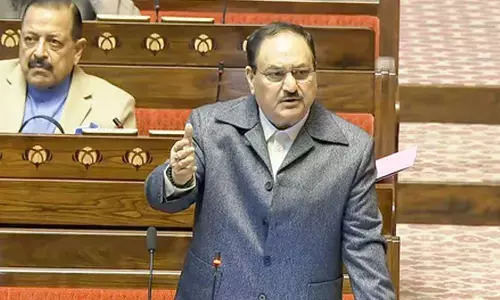World Polio Day 2023: Date, History, Meaning; Symptoms Of Polio, Types Of Polio Vaccines

Polio, the debilitating and highly infectious disease that has existed since ancient times, is a disabling and life-threatening disease that can be transmitted from person to person and cause paralysis or weakness in the arms or legs.
World Polio Day 2023: Polio, the debilitating and highly infectious disease that has existed since ancient times, is a disabling and life-threatening disease that can be transmitted from person to person and cause paralysis or weakness in the arms or legs. The polio virus can live in the throat and intestines of an infected person and can be contracted through food and water in unsanitary conditions. It can be transmitted through a nap or the feces of an infected person. Even people who don't have symptoms can spread it to others. On January 13 this year, India marked 12 years polio-free, which is considered a remarkable achievement; The last case of polio in India was detected in 2011.
World Polio Day is celebrated every year on October 24 to raise awareness about the importance of polio vaccination to protect children. The oral polio vaccine is very effective in protecting against polio.
Polio vaccines
Oral polio vaccine (OPV)
OPV produces antibodies in the blood and provides protection against all three types of poliovirus. In case of infection, it protects the individual against polio paralysis by preventing the spread of poliovirus to the nervous system.
Inactivated polio vaccine (IPV)
It is an injectable vaccine and can be given alone or with other vaccines (e.g., diphtheria, tetanus, pertussis, hepatitis B, and haemophilus influenza). Three doses spaced apart are generally administered to generate adequate levels of seroconversion. A booster dose is added during late childhood to prevent polio.
Polio symptoms
Most people affected by the polio virus are asymptomatic and do not have any symptoms. While 1 in 4 people who suffer from polio develop mild symptoms such as sore throat, fever, tiredness, nausea, headache and stomach pain. Some people with this virus can develop serious complications in the brain and spinal cord, such as meningitis, paralysis, or weakness in the arms or legs.
History of World Polio Day
In the year 1988, there were around 3.5 lakh cases of polio worldwide and the World Health Assembly decided to eradicate the poliovirus. In 2002, the WHO European Region was declared polio-free and since then, World Polio Day has been celebrated annually on October 24 each year.













